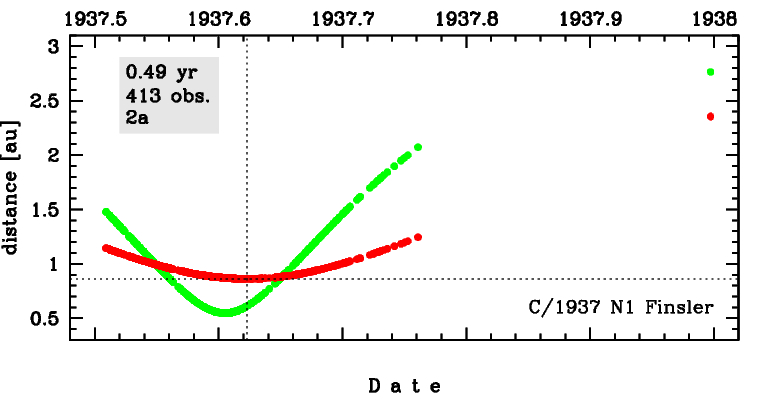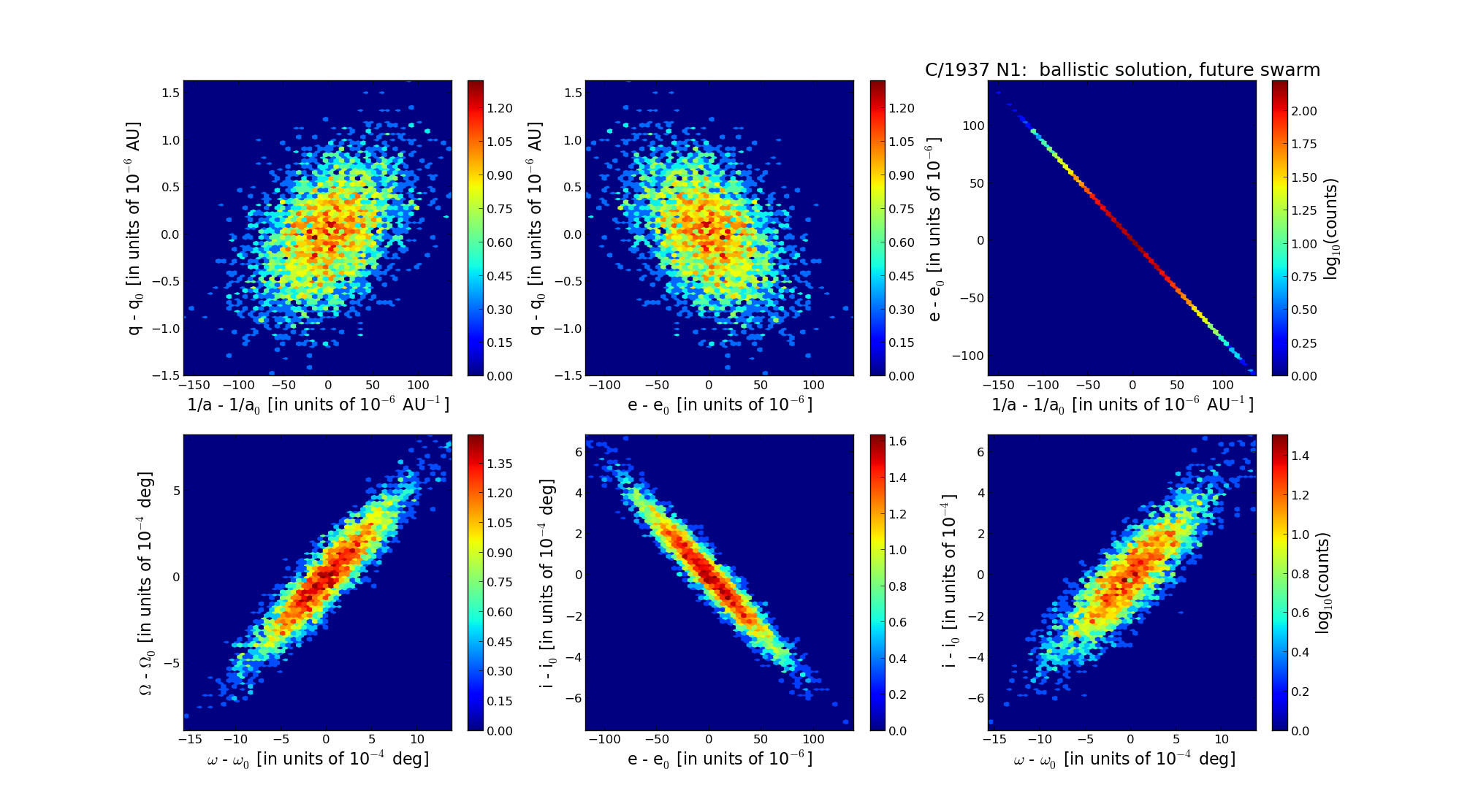C/1937 N1 Finsler
more info
Comet C/1937 N1 was discovered on 4 July 1937 by Paul Finsler (Zürich, Switzerland), that is about 1.5 months before its perihelion passage, and the comet was last seen on 30 December 1937 [Kronk, Cometography: Volume 4].
This comet made its closest approach to the Earth on 9 August 1937 (0.548 au), that is 6 days before perihelion passage.
Solutions given here are based on data spanning over 0.490 yr in a range of heliocentric distances from 1.144 au through perihelion (0.863 au) to 2.355 au.
Pure gravitational orbit determined from all available positional measurements (417 observations) give 2a-class orbit similarly as in Minor Planet Center (212 obs. used, the same arc of data; 2A-class, see MPC).
It was possible to determine the non-gravitational orbit for C/1937 N1 (preferred orbit); the derived NG solution give significantly different original and future 1/a as in the case of pure gravitational model of motion.
This comet suffers rather small planetary perturbations during its passage through the planetary system. However, the change of 1/a due to these perturbations turned out to be quite different in both models of motion (see original and future barycentric orbits in both solutions).
More details in Królikowska et al. 2014.
This comet made its closest approach to the Earth on 9 August 1937 (0.548 au), that is 6 days before perihelion passage.
Solutions given here are based on data spanning over 0.490 yr in a range of heliocentric distances from 1.144 au through perihelion (0.863 au) to 2.355 au.
Pure gravitational orbit determined from all available positional measurements (417 observations) give 2a-class orbit similarly as in Minor Planet Center (212 obs. used, the same arc of data; 2A-class, see MPC).
It was possible to determine the non-gravitational orbit for C/1937 N1 (preferred orbit); the derived NG solution give significantly different original and future 1/a as in the case of pure gravitational model of motion.
This comet suffers rather small planetary perturbations during its passage through the planetary system. However, the change of 1/a due to these perturbations turned out to be quite different in both models of motion (see original and future barycentric orbits in both solutions).
More details in Królikowska et al. 2014.
| solution description | ||
|---|---|---|
| number of observations | 413 | |
| data interval | 1937 07 04 – 1937 12 30 | |
| data type | perihelion within the observation arc (FULL) | |
| data arc selection | entire data set (STD) | |
| range of heliocentric distances | 1.14 au – 0.86 au (perihelion) – 2.36 au | |
| detectability of NG effects in the comet's motion | comet with determinable NG~orbit | |
| type of model of motion | GR - gravitational orbit | |
| data weighting | YES | |
| number of residuals | 765 | |
| RMS [arcseconds] | 2.05 | |
| orbit quality class | 2a | |
| orbital elements (barycentric ecliptic J2000) | ||
|---|---|---|
| Epoch | 2237 09 11 | |
| perihelion date | 1937 08 15.71041198 | ± 0.00014721 |
| perihelion distance [au] | 0.85988734 | ± 0.00000043 |
| eccentricity | 0.99983290 | ± 0.00003483 |
| argument of perihelion [°] | 114.636164 | ± 0.000405 |
| ascending node [°] | 59.325102 | ± 0.000235 |
| inclination [°] | 146.421365 | ± 0.000195 |
| reciprocal semi-major axis [10-6 au-1] | 194.32 | ± 40.51 |
| file containing 5001 VCs swarm |
|---|
| 1937n1a5.bpl |

